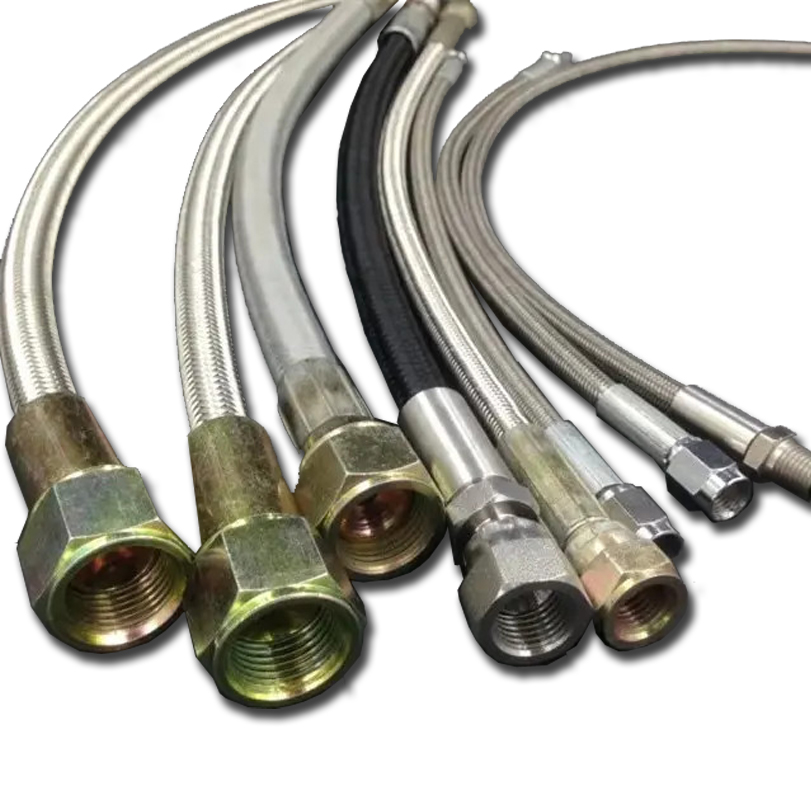335345435
Oct . 14, 2024 23:10 Back to list
Hydraulic Hose Assemblies and Fittings for Optimal Performance and Durability
Hydraulic Hose Assemblies and Fittings An Overview
Hydraulic systems are pivotal in numerous industries, including construction, agriculture, manufacturing, automotive, and more. At the heart of these systems are hydraulic hose assemblies and fittings, which ensure efficient fluid transfer and help maintain the functionality and safety of hydraulic equipment. This article will explore the components, types, applications, and maintenance of hydraulic hose assemblies and fittings.
What Are Hydraulic Hose Assemblies?
Hydraulic hose assemblies consist of hoses, fittings, and couplings that are connected to create a complete circuit for fluid flow. These assemblies are designed to handle high pressure, allowing for the transmission of hydraulic fluid to power various machinery components. The main components of a hydraulic hose assembly include
1. Hoses Hydraulic hoses are specialized tubes reinforced with layers of rubber, synthetic materials, and wiring to withstand high pressures and extreme environmental conditions. They are flexible, which allows them to navigate through tight spaces and complex routes in machinery and equipment.
2. Fittings Fittings connect hoses to various components, such as pumps, valves, and cylinders. They come in a multitude of shapes and sizes and are designed to create a tight seal, preventing fluid leakage while maintaining the flow of hydraulic fluid.
3. Couplings Couplings allow for quick and easy connection and disconnection of hoses, providing versatility in hydraulic systems. They are often used in situations where equipment needs to be exchanged or serviced.
Types of Hydraulic Hoses
There are various types of hydraulic hoses, each tailored to specific applications and pressure requirements. The most common types include
1. Wire-Braided Hoses Reinforced with steel wires, these hoses are capable of handling high-pressure applications and are commonly used in heavy machinery and industrial equipment.
2. Spiral Hoses Designed for very high-pressure applications, these hoses feature a spiral of steel wire reinforcement, providing superior strength and flexibility.
3. Thermoplastic Hoses Constructed from durable thermoplastic materials, these hoses are lightweight and resistant to abrasion and chemicals, making them ideal for use in extreme conditions.
4. Rubber Hoses These hoses are generally used for lower pressure applications and are prized for their flexibility and ease of handling.
Types of Fittings
Hydraulic fittings can vary widely in design and application. Some common types include
1. Elbow Fittings Change the direction of fluid flow, available in various angles, most commonly 90 or 45 degrees.
2. Straight Fittings Used for connecting two hoses directly in a straight line.
hydraulic hose assemblies & fittings

3. Tee Fittings Allow for branching off in a hydraulic system, enabling multiple components to be fed from a single source.
4. Bulkhead Fittings Designed to create a secure connection through panels, housing, or walls, ensuring a neat installation.
Applications of Hydraulic Hose Assemblies and Fittings
Hydraulic hose assemblies and fittings are essential in a wide array of applications
- Construction Heavy equipment such as excavators and bulldozers rely on hydraulic systems for their operation, necessitating robust hose assemblies for efficient power transmission.
- Agriculture Agricultural machinery, including tractors and harvesters, use hydraulic systems to lift and lower implements and operate machinery.
- Manufacturing In manufacturing plants, hydraulic hoses and fittings are essential for operating machinery and robotic arms, ensuring precision and efficiency.
- Automotive Hydraulic systems in vehicles, such as brakes and power steering, utilize specially designed hose assemblies.
Maintenance and Inspection
Regular maintenance and inspection of hydraulic hose assemblies and fittings are critical to ensure safety and reliability. Key practices include
1. Visual Inspection Check for signs of wear, corrosion, and leaks. Any visible damage should be addressed immediately to prevent failures.
2. Pressure Testing Conduct periodic pressure tests to ensure the hoses can handle the required pressure without deforming or leaking.
3. Cleaning Keep the fittings and surrounding area clean to prevent contamination that could adversely affect the hydraulic fluid.
4. Replacement If hoses show signs of bulging, cracking, or significant wear, they should be replaced promptly, as failure to do so can lead to serious accidents and costly downtime.
Conclusion
In summary, hydraulic hose assemblies and fittings are vital components in hydraulic systems across a range of industries. Understanding their types, applications, and maintenance requirements is essential for anyone involved in the operation or maintenance of hydraulic equipment. By ensuring the reliability of these components, companies can enhance productivity and promote safety in the workplace.
-
Discount Hydraulic Hose Factories | Top Quality & Discounts
NewsJul.20,2025
-
EN856 4SP Hydraulic Hose - High Pressure & Durable
NewsJul.20,2025
-
SAE 100 R17 Black Smooth Cover Hydraulic Hose
NewsMar.07,2025
-
SAE 100 R17 Black Smooth Cover Hydraulic Hose
NewsMar.07,2025
-
SAE 100 R17 Black Smooth Cover Hydraulic Hose
NewsMar.07,2025
-
SAE 100 R17 Black Smooth Cover Hydraulic Hose
NewsMar.07,2025



